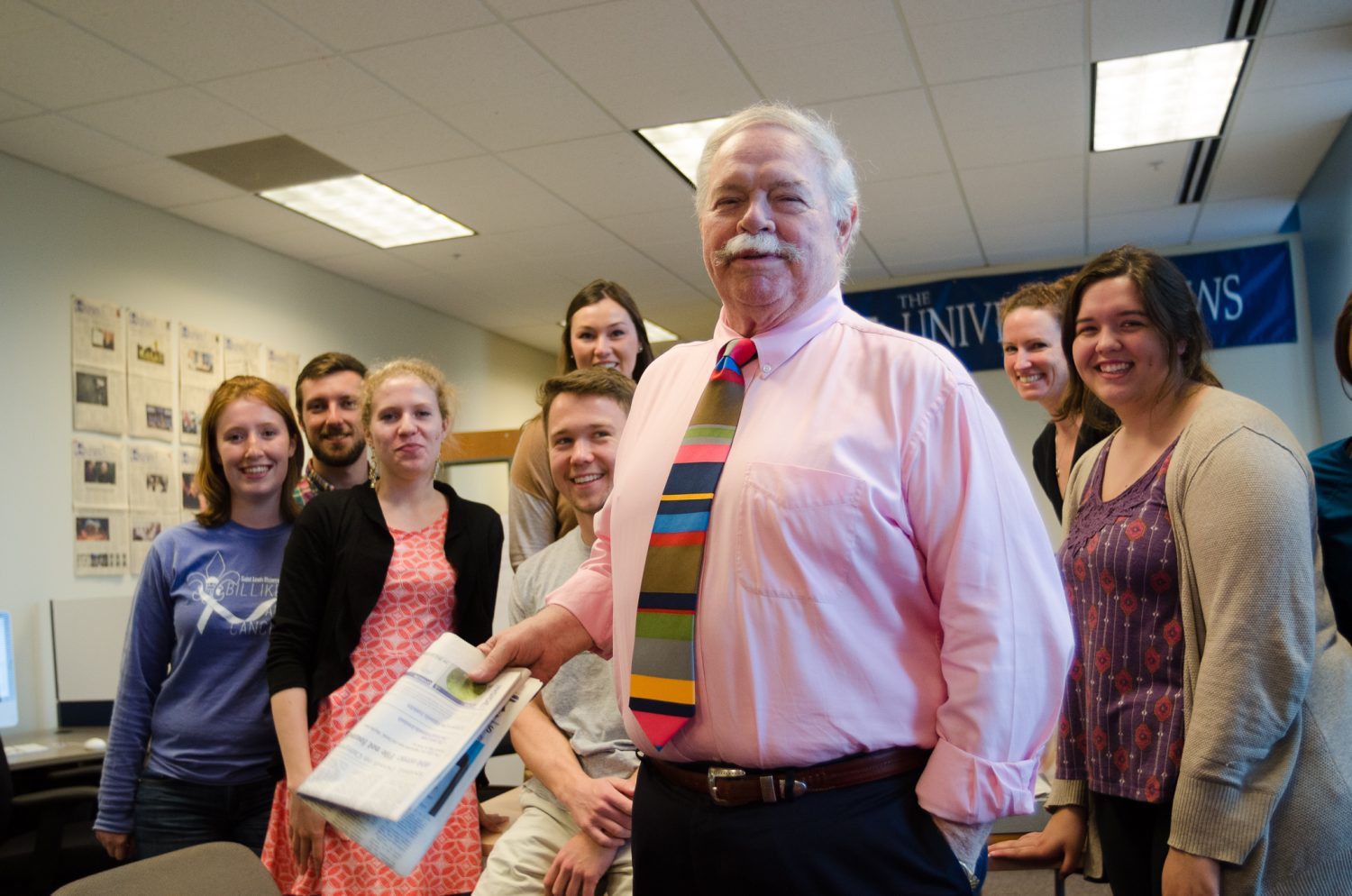Jazz pianist Brad Mehldau, leader of one of the hardest-working acts in the business and the focus of much praise from the jazz world, made his St. Louis debut this past week.
His trio resided for five nights at Jazz at the Bistro, successfully captivating and challenging the audience with its compelling rendition of standard repertoire and original material. Joined by bassist Larry Grenadier and drummer Jorge Rossy, Mehldau used the trio format to explore the melody and mood of his songs and, on a larger scale, the definitions and regulations of modern jazz music.
With his notoriously shy demeanor and retiring looks, Mehldau doesn’t make for a commanding figure on the Bistro stage. With minimal acknowledgement to the enthusiastic crowd, he sits on the piano bench with his arms fully outstretched. His head cocked to the right, Mehldau begins to work with the piano and, in time, allows the mood and groove of the piece to melt his stance as he nods and boogies along with his own musical creation.
The trio began Thursday night’s first set with the standard “The More I See You,” taking time to feel out the song’s melody. The staggered piano chords were offset by Rossy’s relentless ride cymbal until the trio moved seamlessly into Thelonious Monk’s “Monk’s Dream.” The gradual fluidity of the first song moved directly into the swinging samba feel of the second. Such explorations are in contrast to the straightforward way in which such standards are usually interpreted, but Mehldau rewards the listener’s patience with some of the most earnest and forceful solos in music today.
Though Mehldau’s trio has a strong affection for standard jazz repertoire, many of Mehldau’s original compositions highlighted the trio’s diversity and abandonment of the usual. Such was the case with “London Blues,” as the trio repeated the head chart no more than twice before giving Rossy room for a full-out drum solo. While beginning with a drum solo is a break in jazz protocol, Rossy’s unyielding, circular drumming accented the funkier side of the tune.
The trio ended Thursday night’s first set with its version of Radiohead’s “Exit Music,” one of the many pop songs the group has interpreted. Unlike many modern jazz interpretations of rock `n roll songs, Mehldau makes no attempt to place any unnecessary swing or bounce into the song, avoiding the graveyard of jazz clich?s that mar many respectable songs.
Instead, Mehldau grappled with the tension and despair of the song’s melody and delivered the most transcendent moment of the evening. While he and the trio work with the construction of the song, the feeling of the original is never sacrificed.
Saturday night found Midtown in rare form; Grand Avenue bustled with patrons of the Bob Costas-Jerry Seinfeld gala at the Fox Theater, and the electricity of the evening found its way to the nearby Bistro.
A line of eager listeners stretched out of the doors of the Bistro for Brad Mehldau’s final St. Louis set. Those patient music lovers were rewarded handsomely for their dedication, as the trio delighted the crowd with warm readings of familiar favorites and a look into the future of the group.
It is the benchmark of every great jazz combo that each individual player’s singularity and dependence is necessary for the cohesive union of the entire band. This statement could be easily applied to The Brad Mehldau Trio, as each musician approached his respective instrument with an intensity that seemed to disregard the other members’ contributions.
Larry Grenadier sang along, with his upright bass, as Jorge Rossy never took his eyes off of his crash cymbal. But as the melodic and rhythmic elements of the song are worked out individually, unity is achieved through the efforts of each member.
The brightest moments of Saturday’s set came with the introduction of the trio’s new, as-yet-untitled pieces. One such song began with Mehldau, playing solo on the piano, exploring the length of the keyboard. His classical training was obvious, and his finger calisthenics were as incredible to see as to hear.
The nonstop staccato runs were not a cheap form of displaying expertise, but rather allowed the listener to join Mehldau in exploring the formation of these brand-new pieces. This melodic catharsis was aided by the eventual entrance of the bass and drums, as the song ended with the kind of breathlessness that only live music allows.
A look at Mehldau’s set lists shows his appreciation of jazz history, acceptance of songs outside the jazz idiom and a vision and talent unmatched by any working jazz musician. He is an artist in his prime and will continue to redefine the rules of jazz music in the coming years.




